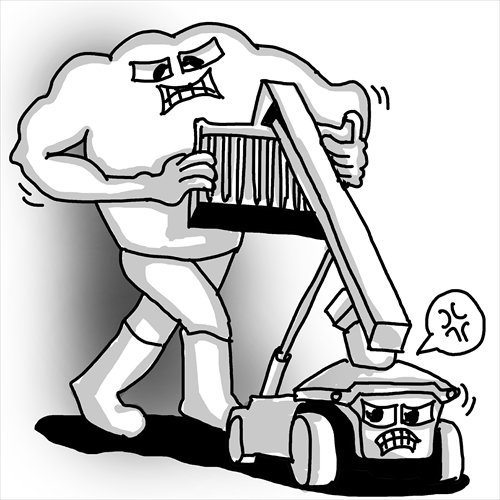Trade volume brings quality shortfalls into focus

Illustration: Lu Ting/GT
Last year saw China overtake the US as the world's largest goods trader for the first time in history, the Ministry of Commerce (MOFCOM) announced over the weekend, citing figures from the World Trade Organization (WTO). Specifically, the country traded $4.16 trillion in goods in 2013, with exports and imports valued at $2.21 trillion and $1.95 trillion respectively.
This development marks not only a new milestone in terms of China's reform and opening-up but also a major stride for economic globalization, according to Yao Jian, a MOFCOM spokesman.
But as the country's trading volume continues to swell, Chinese exporters are encountering friction and rising trade protectionism in overseas markets, which further underscores the need for China to improve its trade structure and the quality of its goods.
Let's take the Sino-US trade relationship as an example. According to information from the MOFCOM website, since the beginning of this year, the US Department of Commerce (DOC) has launched anti-dumping and countervailing duty investigations into three categories of Chinese products - including carbon and certain alloy steel wire rods, crystalline silicon photovoltaic cells and calcium hypochlorite. Moreover, the Office of the United States Trade Representative issued a list last month which ranked China as the world's biggest market for counterfeit goods, which, according to an article from the People's Daily, is nothing but a cover for trade protectionism.
Elsewhere, trade disputes between China and emerging-market economies are also becoming increasingly frequent. During the first two months of this year, the MOFCOM issued around 20 warnings concerning trade remedy investigations against Chinese imports from developing countries such as India, South Africa, Indonesia, Egypt, Argentina, Mexico and Brazil.
Furthermore, in light of the economic and financial beatings many developing countries have taken amid the US Federal Reserve's transition toward tighter monetary policy, more emerging markets may soon impose trade restrictions to protect their own domestic enterprises and industries. This means Chinese traders can expect more challenges in these regions in the near future.
The US's re-industrialization strategy and the rise of manufacturing capabilities across the developing world offer only partial explanations for the increasingly tense trade environment Chinese exporters are facing these days. There is, in fact, a more fundamental cause at play here. Most Chinese manufactured goods are still low value-added, low-tech products that are mass-produced at local factories for rock-bottom prices. It's no surprise that overseas manufacturers have become resentful of being undercut by their Chinese rivals and are pursuing trade remedies.
Despite its massive trade portfolio, China is still relatively weak when it comes to the character and quality of the goods it supplies to the world at large. What it still lacks are advanced-technology products, cutting-edge patents and appealing brands. These are the areas that Chinese manufacturers and policymakers must focus on as they work to turn the country into an indispensable trading partner.
Aside from the labor- and resource-intensive goods that have become synonymous with "Made in China," a large portion of the country's high-tech exports are merely items assembled with imported raw materials and foreign components. For instance, while China's auto sector leads the world in sales and production, most of the country's exported vehicles leave local factories with little in the way of added value. This is to be expected given the sector's shortage of core technologies and patents. By focusing solely on processing and assembling, local enterprises will never improve their core competitiveness.
It goes without saying that China has a long way to go before it can become both a large and a strong trading partner. Measures are urgently needed to adjust and optimize the structure of the country's exports and imports as competition in the global market grows increasingly fierce. To secure market share for exports over the long term, China should accelerate its economic restructuring and industrial upgrading to move up the global value chain. Over the short term, relevant authorities should make good use of the WTO's dispute settlement mechanism to both safeguard the interests of local exporters and help them respond to trade remedy investigations launched by foreign entities.
The author is a reporter with the Global Times. bizopinion@globaltimes.com.cn